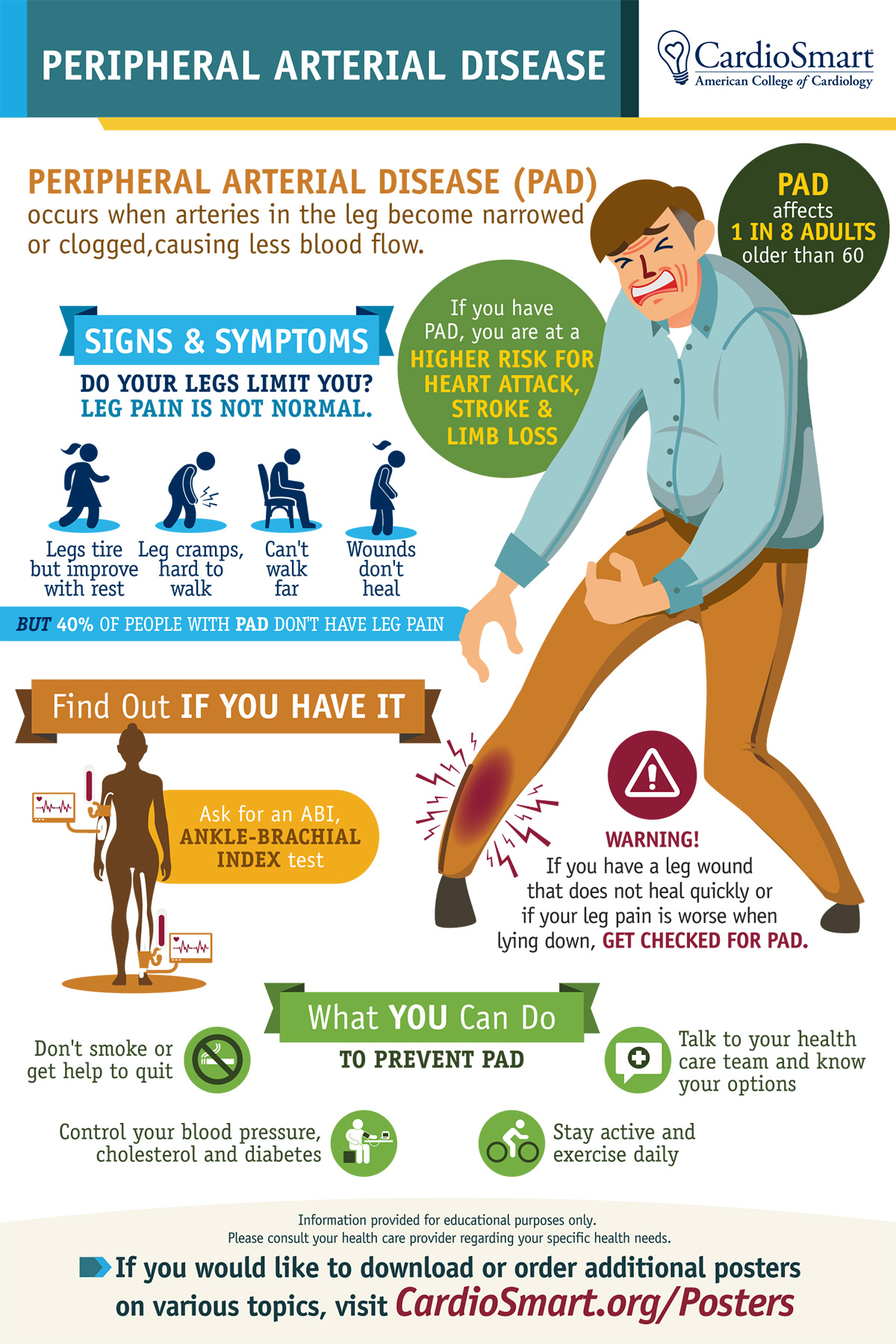Peripheral Matters | Can Evolocumab Benefit PAD Patients?
Major adverse cardiovascular and limb events are reduced with evolocumab added to statin therapy in patients with symptomatic lower extremity peripheral arterial disease (PAD) – even in those without a history of myocardial infarction (MI) or stroke. These are among the findings of a new analysis from the FOURIER study presented at AHA 2017 and published in Circulation.
Marc P. Bonaca, MD, MPH, et al., write that “the relationship between achieved LDL-C and lower risk of limb events extended down to very low achieved levels of LDL-C.” And these “benefits come with no offsetting safety concerns.”
In FOURIER, 3,642 (13.2 percent) patients had PAD, including 1,505 patients without a history of MI or stroke. PAD was defined as intermittent claudication and an ankle brachial index of <0.85 or a history of a peripheral vascular procedure.
Results showed that evolocumab consistently and significantly reduced the primary endpoint – a composite of cardiovascular death, MI, stroke, hospital admission for unstable angina or coronary revascularization – in patients with PAD (hazard ratio [HR], 0.79; p = 0.0098) and without PAD (HR, 0.86; p = 0.0003). The key secondary composite endpoint of cardiovascular death, MI or stroke also was significantly reduced in those with and without PAD (HR, 0.73 and 0.81, respectively).
Larger absolute risk reductions were seen in PAD patients than non-PAD patients for the primary endpoint (3.5 percent vs. 1.6 percent) and the key secondary endpoint (3.5 percent vs. 1.4 percent).
The risk of major adverse limb events also was consistently reduced with evolocumab in patients with and without PAD (HR, 0.58; p = 0.0093). A consistent relationship between lower achieved LDL-C and lower risk of limb events was found and this extended down to <10 mg/dL.
"The relationship between achieved LDL-C and lower risk of limb events extended down to very low achieved levels of LDL-C." — Marc P. Bonaca, MD, MPH
According to the authors, their data support reducing LDL-C levels to very low targets as a “core focus of preventive therapy in patients with symptomatic lower extremity peripheral artery disease, including those without concomitant coronary or cerebrovascular disease.”
In other work presented at AHA 2017, supervised treadmill exercise improved walking performance In PAD patients – but granulocyte-macrophage colony-stimulating factor (GM-CSF) either alone or in combination with exercise did not. The results were also published in the Journal of the American Medical Association.
Mary M. McDermott, MD, et al., evaluated 210 patients with PAD randomized to supervised exercise plus GM-CSF (n = 53); supervised exercise alone (n = 53); GM-CSF alone (n = 53); or attention control plus placebo (n = 51). Supervised exercise included treadmill exercise three times weekly for six months. Attention control included weekly educational lectures by clinicians for six months.
At 12-weeks, exercise plus GM-CSF “did not significantly improve 6-minute walk distance” more than exercise alone (mean difference, −6.3 m; p = 0.61) or more than GM-CSF alone (mean difference, +28.7 m; Hochberg-adjusted p = 0.052).
The authors conclude their results “confirm the benefits of exercise but do not support using GM-CSF to treat walking impairment in patients with PAD.”
References
Bonaca MP, Nault P, Giugliano RP, et al. Circulation 2017;Nov 13:[Epub ahead of print].
McDermott MM, Ferrucci L, Tian L, et al. JAMA 2017;Nov 15:[Epub ahead of print].
Clinical Topics: Diabetes and Cardiometabolic Disease, Dyslipidemia, Prevention, Vascular Medicine, Atherosclerotic Disease (CAD/PAD), Nonstatins, Novel Agents, Statins, Exercise
Keywords: ACC Publications, Cardiology Interventions, Intermittent Claudication, Peripheral Arterial Disease, Ankle Brachial Index, Granulocyte-Macrophage Colony-Stimulating Factor, Walking, Hydroxymethylglutaryl-CoA Reductase Inhibitors, Macrophage Colony-Stimulating Factor, Numbers Needed To Treat, American Medical Association, Angina, Unstable, Stroke, Lower Extremity, Myocardial Infarction, Attention
< Back to Listings


